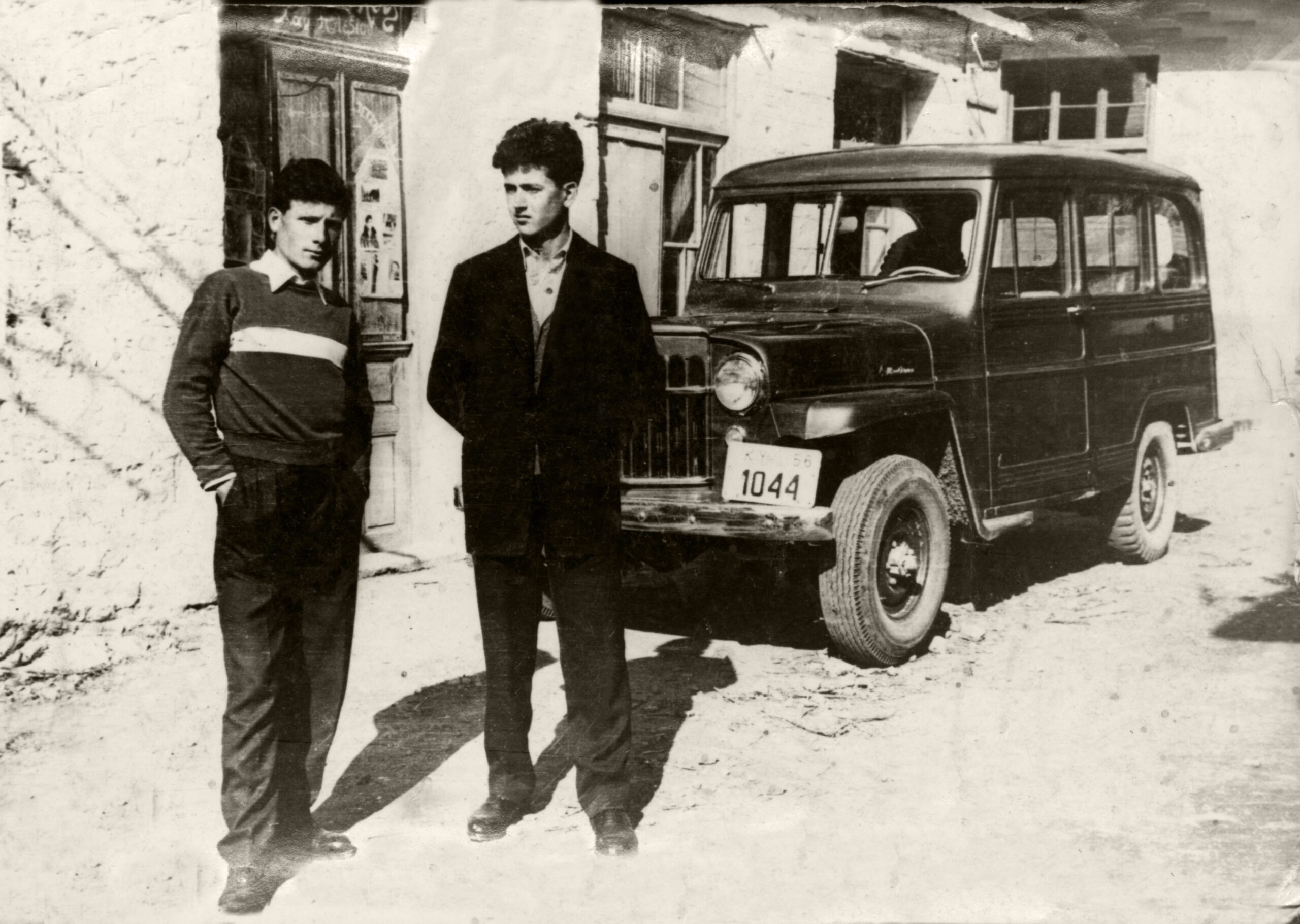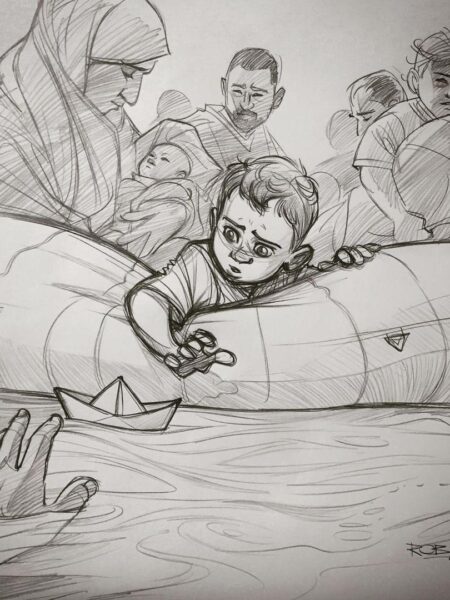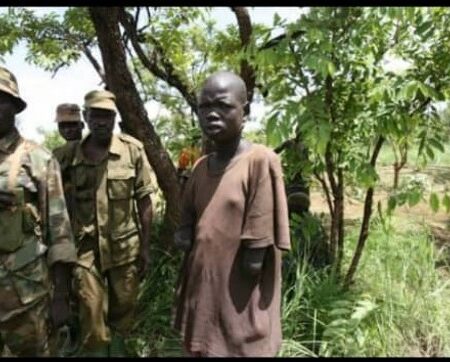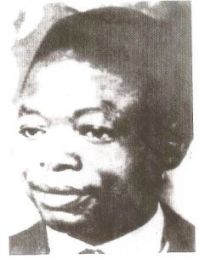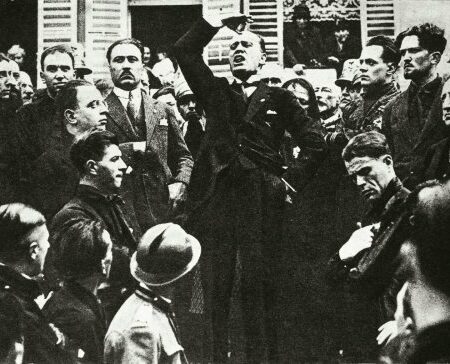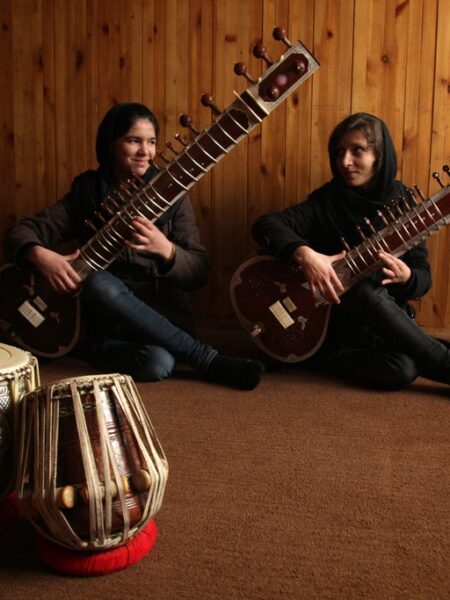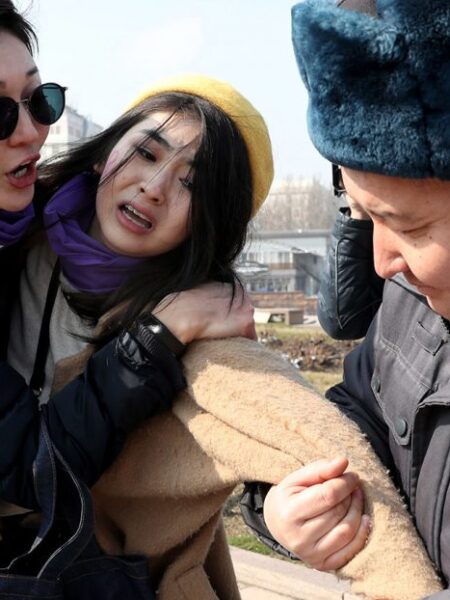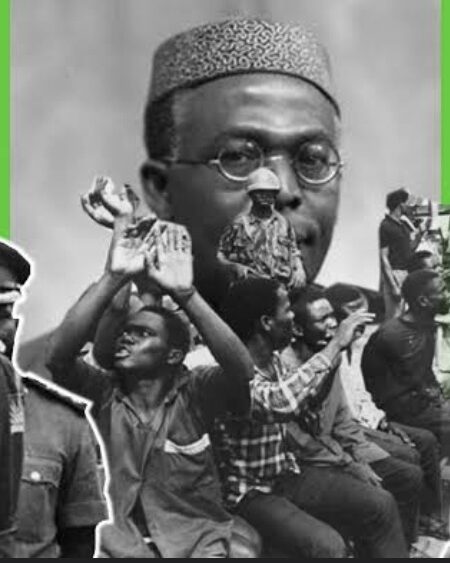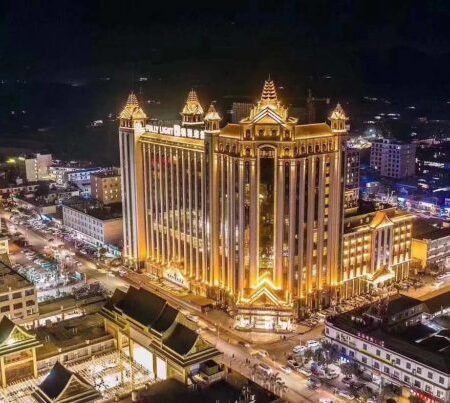This study incorporates a series of personal stories and narratives from the time of the Soviet invasion and American intervention in Afghanistan. The study incorporates stories of Afghans from different walks of life—soldiers, ordinary Afghans, and younger Afghans who grew up primarily after the Soviet invasion of the country. These stories highlight a wide range of feelings and experiences. By examining these stories, the study attempts to better understand how these events continue to affect Afghan society. It also shows us how important it is to listen to different voices when studying history.
Introduction
Storytelling has long been crucial in shaping the discourse surrounding historical events in
Afghanistan, particularly in the case of foreign invasions. This is especially evident in the highly
controversial and complex chapters of Afghanistan’s history, which are subject to varying
interpretations based on individual perspectives and experiences. The Soviet invasion of
Afghanistan from 1979-1989 and the United States so-called ‘intervention’ from 2001-2021 are
the latest examples. These personal narratives serve as a valuable resource for understanding the
diverse impacts and interpretations of significant events, such as the Soviet and American
involvement in Afghanistan. The stories as narrated by people have greatly contributed as to how
the invasion and intervention have been perceived, and how it has changed the perception of the
new generation of Afghans about this period. These diverse stories contributed to a more
comprehensive and nuanced understanding of the Soviet and American presence in Afghanistan
and the ways in which it impacted individuals from various backgrounds and experiences.
This paper attempts to incorporate the stories of a series of individuals who have narrated
their experience and stories in a series of interviews to the authors of this paper, and the views of
the post-war generation of Afghans on these historical events. The paper begins by providing a
literature review and theoretical framework for the role of collective memories and chronicles in
shaping discourses, to establish a theoretical understanding. It then proceeds to incorporate the
stories of soldiers who served in the Afghan National Army; ordinary Afghans affected by these
events; and how their stories have been conveyed to the new generation of Afghans. These stories
offer insight into the war and the challenges and hardships faced by these individuals, as well as
the ways in which they coped with the invasion and the subsequent events that occurred in the
country.
By doing so, this paper intends to explore the impact of storytelling and chronicles on the
understanding and memory of post-war Afghan generations. Through a critical analysis of these
stories and the perspectives of post-war generations of Afghans, the study aims to assess the extent to which the emotions, experiences, and views of individuals have been reflected in shaping the
collective memory of these events. The analyses are organized chronologically, examining stories
from before, during, and after these events to fully understand the influence of storytelling on the
construction of historical memory of these events.
Literature Review
Understanding Collective Memory
Collective memories and chronicles have played a vital role in forming discourses and the
construction of oral history of historical events. Scholars have emphasized on the importance of
collective memories in passing down cultural heritage from one generation to the next. Maurice
Halbwachs (1992) defines collective memory as “a reconstruction of the past using data from the
present”. Collective memories serve as significant tools that influence the discourses and public
opinion of historical events. Though, the extent to which collective memory can be understood as
a reliable source of historical events is debated among scholars. Eviatar Zerubavel (1999) argues
that collective memory is not history because it cannot give us all important events in a detailed
form; it selects some memories while excluding others. Similarly, chronicles serve as an important
tool in identifying and understanding discourses throughout history. Together, they help to shed
light on the past and continue to influence conversations about historical events. This literature
review aims to highlight the importance of chronicles and collective memory in understanding
historical events. It, also, aims to identify the available literature on the role of collective memory,
and oral history in shaping the discourses of the Soviet and American invasions of Afghanistan.
To begin with, one of the important works on collective memories and its role in shaping
discourses is by Maurice Halbwachs 1992, On Collective Memory. In his work, the author argues
that memory is not an individual but a collective phenomenon. This is an important assertion as
it distinguishes between individual and collective memories. While an individual’s memory is
based on and relies on their own experiences; collective memory on the other hand is shaped
through group interaction within a given context. The author argues that collective memory is not
just a collection of individual memories, but it is rather a shared system of beliefs and
representations about the past. This collective representation of historical events within a group is based on the shared views and opinions of the group about an event that has taken place and is subject to the interpretation of the group’s collective memory and understanding. In his view, this system of beliefs is constantly being updated and revised as new information is learned and old information is forgotten.6 Furthermore, he identifies two important dimensions to collective memories as ‘place’ and ‘time’ that plays an important role in how collective memories are shaped.
Halbwachs’s work offers significant and important insights into how collective memory is
shaped, revised, and understood, highlighting the role of society in this process. Specifically, his
work is relevant to the study of collective memory in Afghanistan and helps distinguish it from
individual memory. This differentiation plays an important role in understanding the complex
nature of recalling the Soviet and American invasions of Afghanistan. By considering collective
memory as a dynamic process influenced by social structures and historical context, it offers an
insight into how memories can both unite and divide communities.
Similarly, Eviatar Zerubavel in his work, Social Mindscapes, provides a similar insight into
the issue of collective memory. He defines collective memory as “the body of beliefs and ideas
about the past that is shared by a particular group of people”. In his work the author contends that
collective memory is not simply a passive reflection of the past but is actively constructed and
reconstructed by social groups. This highlights the importance of the collective group views and
its role in shaping how a particular event is shaped and constructed within a group’s collective
memory. It does not necessarily mean that this memory must be experienced collectively by every
individual member of a group to be part of constructing and shaping it. In contrast to Halbwachs’s
work, the author also points out the limitation with this approach into understanding history. He
argues that collective memory is not history because it cannot give us all important events in a
detailed form; it selects some memories while excluding others.
Moreover, in his work, Zerubavel identifies three distinct factors that contribute to shaping
a collective memory. These factors include selection—a memory is not a complete historic record
of all the facts, but rather a selection of some events, secondly, enshrinement—once certain events
are selected, are enshrined in rituals to solidify the group’s collective memory and become resistant
to change—Lastly, interpretation—the author denotes that it is not just a matter of remembering,
but also of interpretation as actors involved in shaping the collective memory; will always pursue
their self-interests in interpreting the past through collective memories.
Zerubavel’s work offers an important insight into the shaping of the collective memory and
its limitations. His work is relevant to the case study at hand on the role of storytelling and
chronicles in shaping collective memory of the Soviet and American invasions of Afghanistan. It
not only would help in highlighting the role of the chronicles in collective memory formation; but
will also indicate its limitations, and how these memories can be shaped by actors to justify their
positions and to use it to serve their self-interests through reinterpretations.
In contrast to the works of Zerubavel and Halbwachs views on collective memory, Svetlana
Boym (2001) discusses the issue of Nostalgia in her book The future of nostalgia. In her view
nostalgia is “longing for a home that no longer exists or has never existed”. According to Boym,
nostalgia as it was considered in the past is not only an individual sickness, but it is a historical
emotion. Nostalgia to her, is not an antimodern phenomenon as a result of a new understanding
of space and time. But rather Nostalgia is about the biography of groups and biography of
individuals, between collective and individual memory. In terms of the case study at hand, it is
important to understand the role of nostalgic desires in shaping collective memory of the invasions.
In the same vein, the importance of emotions in storytelling is mentioned by Nigel Hunt
and Ian Robbins in their work on Telling Stories of the War. According to Hunt and Robbins, the
interviews with World War Two veterans demonstrate that creating a tale or narrative about the
incident is the best method for coping with painful memories. The methods that different people
have handled their traumatic events are significantly different from one another. The majority of
people have employed avoidance and relied on social assistance when their memories have
bothered them. Hunt and Robbins further highlight that unfortunately, because of this strategy,
many veterans have not been able to handle the terrible aspects of their recollections. This
effectively indicates that veterans’ recollections of the tragic events of the conflict are just as vivid
and can help us better understand what truly happened during a conflict, and how its narration has
shaped the memories of the war of the young generation.
Existing Studies on the Soviet and American Presence in Afghanistan
The Soviet invasion and the United States intervention in Afghanistan has had a lasting impact on
Afghanistan and the wider region, shaping the course of history and influencing the way in which
the invasion and intervention is remembered and understood. This section reviews existing
literature on the topic at hand, while highlighting key research findings, themes, and gaps in
knowledge. It also highlights the complex and multifaceted nature of the Soviet and American
presence in Afghanistan, which has had far-reaching and long-lasting effects on Afghan society,
culture, and politics.
On December 27, 1979, Soviet special forces launched a covert operation to eliminate
Afghan President Hafizullah Amin by attacking the Tadzh-Bek Palace in Kabul. Thus, the attack
officially became the beginning of the Soviet invasion of the country. Though the perspectives on
how the invasion has started, progressed, and ended is significantly different in reports, and
historical documents on both sides; a significant and at times most important role that is ignored
by academics is the role of oral history and chronicles in shaping the collective memory of the
Afghans. It is important to mention that some scholars did integrate the role of chronicles and oral
history in their works; such as, Ghani and Lockhart (2008), Jalali and Grau (2002), Giustozzi
(2009); to draw general conclusions; however, most have ignored the vital role of chronicles and
oral history in collectively shaping the memories of the invasion.
The impact of the Soviet invasion on Afghan society has been significant, with the conflict
creating a power vacuum that led to the fragmentation of Afghan society. Giustozzi argued that
the conflict led to the rise of warlords, which perpetuated the country’s fragmentation. The
conflict also left the country’s economy and infrastructure in shambles, with a fractured society
that required comprehensive reconstruction efforts. Ghani and Lockhart’s study examined the
legacy of the Soviet invasion and emphasized the need for a holistic approach to reconstruction
that addresses the country’s social, economic, and political needs.
On the other hand, the American intervention in Afghanistan in 2001 also had significant
consequences, leading to the fall of the Taliban regime and the beginning of a new phase of the
conflict. The American-led coalition forces toppled the Taliban regime but struggled to stabilize
the country and rebuild it. The impact of the intervention on Afghan society and the country’s
politics is a crucial area of research. This literature review aims to examine the available research
on the American intervention and its impact on the country. Rothstein and Arquilla’s Afghan
Endgames presents a comprehensive examination of Afghanistan’s War, highlighting similarities
and differences between the Soviet and American interventions. The Soviet and American
interventions in Afghanistan were both viewed as foreign invasions by Afghans. While the Soviet
Union aimed to establish a communist government and relied on military force to suppress
opposition, the United States sought to promote democracy and used a combination of military,
economic, and soft power tools. Initially viewed as a liberator, the United States’ perception among
Afghans changed as the war dragged on.
Likewise, another important work that highlights and overviews the history of Afghanistan,
and specifically the United States intervention is the work of Peter Tomsen’s The Wars of
Afghanistan which provides a comprehensive and detailed analysis of the country’s long-standing
conflicts. In Part IV, Tomsen focuses on America’s involvement in the region, drawing on his
experience as a former US envoy to the Afghan resistance during the Soviet occupation. Though
most of his work is based on his experience; he does include the oral narratives of some events in
the book. Through this, Tomsen offers a nuanced perspective on the factors that contributed to the
success and failures of the US intervention, including the military strategies, diplomatic efforts,
and nation-building initiatives. The book provides critical assessments of the Bush
administration’s decision to invade Afghanistan, the challenges of dealing with the Afghan
government and the complexities of the country’s tribal and ethnic dynamics.
To sum up, the Soviet invasion and American intervention in Afghanistan have been
critical events that have had far-reaching and long-lasting effects on Afghan society, culture, and
politics. This literature review aims to synthesize the existing research, emphasizing the role of
oral history and chronicles in shaping the collective memory of the Afghan people. The impact of
the conflict on Afghan society and the American intervention’s consequences will also be
examined in this review.
Methodology
The study at hand, utilized a qualitative research design and approach to collect and analyze data
by employing a range of methods to gain a comprehensive understanding and account of the topic
at hand. In the study, we incorporated semi-structured interviews with various groups of Afghans
including veterans of the Afghan National Army during the Soviet invasion and US interventions,
and ordinary citizens. To supplement the interview data, we conducted desk research, which
involved analyzing available news articles, journal articles, and archival records. Furthermore, we
employed a self-ethnographic approach in which we discussed our personal experiences and the
stories we were told about the invasions. Through this approach, we aimed to explore how the
collective memories of the Soviet invasion, and the subsequent rule of the Mujahdeen and the
Taliban, have influenced the discourse of the people.
By using a combination of qualitative methods, we were able to provide a comprehensive
understanding of the collective memory of the invasions in Afghanistan and its impact on the local
population. This approach allowed us to capture the nuanced and complex nature of the memories
held by different groups and how they were shaped by social and cultural factors. Overall, the
incorporation of diverse methods and our personal reflections in the study contributed to a richer
understanding of the subject matter.
It is important to acknowledge that our study has several limitations that are worth
mentioning. First, the unavailability of extensive archival records and data on the interventions
constrained our ability to delve deeper into the topic as most of archival sources have either been
taken offline by the current Taliban regime or have been destroyed during the past four decades of
conflict. Moreover, restricted access to the ground, considering the Taliban’s control over the
country, further hindered our research efforts. Additionally, many of our interview participants
were hesitant to participate in the study due to fear of retaliation, and the Taliban’s tight grip on
the flow of information from the country added to the difficulty. Nonetheless, we made an effort
to overcome these limitations by taking necessary measures, such as ensuring the anonymity of
research participants or relying on handwritten notes instead of audio recordings. Likewise, finding
interview participants among the Afghan diasporas at large. Despite these limitations, our study
provides valuable insights into the collective memory of the invasions in Afghanistan, and the
impact it has had on the local population.
An overview of the Soviet Invasion of Afghanistan (1979-1989)
On December 27, 1979, Soviet special forces launched a covert operation to eliminate Afghan
President Hafizullah Amin by attacking the Tadzh-Bek Palace in Kabul. The elite Spetsnaz units,
renowned for their combat expertise, swiftly overpowered the presidential security forces, who
were caught off guard by the sudden assault. Amin was killed within a short time,24 and the attack
marked a turning point in Afghanistan’s history as it led to the installation of a new government
and the beginning of a prolonged period of conflict. The subsequent events marked the official
Soviet invasion of Afghanistan, with the Soviet Union installing a puppet regime and increasing
its military presence in the country to initially protect its borders while delegating internal security
to the Afghan National Army. On the same day, Babrak Karmal was appointed as the Chairman of the Central Committee and assumed leadership of Afghanistan for the next seven years.
Throughout the invasion that lasted from 1979-89, the Soviet Union deployed in the excess of 100,000 military personnel, advisors from the KGB, technicians, and instructors. This act of direct military intervention and interference in the internal affairs of Afghanistan garnered the condemnation from states across the world, with the United States and her western allies engaging in a proxy war with the Soviet Union. Though archival data and primary sources from the period and the directive from the government of the Soviet Union, suggest that the invasion of Afghanistan was an act of assistance at the request of the government of Democratic Republic of Afghanistan. In retaliation to the Soviet presence, the United States government under President Carter’s administration, directly funneled billions of dollars in arms and provided trainings and support to the Afghan resistance fighters, known as the Mujahideen through
Pakistan.
The mobilization of forces to fight against the Soviet Union in Afghanistan, also known as
the Jihad or Holy War, attracted a large number of fighters (so-called Mujahedeen) from various
countries and regions. Many extremist organizations, including those led by Osama Bin Laden and
the likes of movements such as that of the Taliban, were among those who joined the fight against
the Soviets. The United States provided financial and military aid to these organizations through
Pakistan, which later had significant consequences for the geopolitical future of Afghanistan and
the wider region.
The United States’ involvement in the Soviet-Afghan War had significant consequences
for the region and the world. When the Soviet Union withdrew from Afghanistan in 1989, it was
seen as a major victory for the anti-communist Mujahedeen forces and a blow to the Soviet-backed
regime in Kabul. However, the conflict also left a power vacuum in the country that was filled by
various factions of the Mujahedeen, including those led by Islamic extremist organizations. These
groups went on to cause instability and conflict in the region, leading to a civil war in Afghanistan
and terrorism threats in neighboring countries and the wider region. The actions of these extremist
groups, particularly those led by Osama Bin Laden, would eventually lead to major international
events such as the September 11th attacks and the Global War on Terror.
The Soviet invasion of Afghanistan also resulted in significant casualties on both sides of
the conflict. It is estimated that the Soviet forces suffered up to 15,000 casualties, including those
killed or wounded. On the Afghan side, the casualties were much higher, with estimates of up to 2.5 million civilians killed, and countless others injured and millions other displaced. The war
also had a devastating impact on the Afghan economy and infrastructure, with towns and villages
being destroyed and entire regions left in ruins. The long-term effects of the conflict on
Afghanistan and its people are still being felt today, with the country facing ongoing instability
and conflict, and the rule of a radical group that governs on the strictest interpretation of the Islamic
law.
How is the Soviet invasion narrated by Afghans?
At the forefront of the invasion, even before the so-called Mujahedeen, the first line of defenders
against the invasion was the Afghan National Army (ANA) Soldiers. The invasion as it began
targeted the presidential security forces within the Tadzh-Bek Palace; and simultaneously other
operations within the country’s security forces began. It is noteworthy to mention that a vast
number of Soviet military advisors and personnel was already sent into Afghanistan to help the
government, and to support the goals of the revolution.34 Across the country main ANA bases
started to host a number of Soviet soldiers. The Bagram Air Base that was serving as the prime
hub for the ANA airborne and other divisions became a staging ground for the initial attacks on
the ANA soldiers who resisted the invasion and the killing of President Amin by the Soviets and
the rule of Karmal. One of these soldiers who served in ANA out of Bagram base was Second
Lieutenant Muhabat Khan who served from 1975-79. Muhabat Khan narrates that:
On the eve of the invasion, most of our friends were in the army barracks, and
some of us had the overnight watch. I was sitting in a tower with my AK-4 rifle,
a machine gun in the tower, and a pair of binoculars. As usual the evening was
calm, and we had no reason to believe that we would be attacked within our
barracks. Suddenly I started hearing gunshots inside the base, and without getting
any prior information, tanks started to roar in the base and a gunfight began. It
might have lasted for 30 minutes, the communication devices were jammed, as
the Soviet engineers were responsible for maintaining the communication
instruments. Initially I thought that it may be ANA soldiers who defected [to the
anti-government resistance [(also discussed by Heller 198035)], but soon it
became apparent that it was the soviet soldiers shooting ANA officers. We tried
to fight them off, but in a matter of moments, most of the ANA soldiers were
either killed, captured, or escaped. I was initially pinned down in my position and
they were shooting at the tower. As the minutes went by, I noticed that execution
and arrest of army officers who did not want to pledge allegiance was occurring.
I decided to escape. I jumped from the tower and ran away into the nearby grape
gardens [forest], I walked all night long, spent the next day hiding inside a canal
until sundown and walked the next evening until I reached the place of a friend
where I changed from my Army uniform to civilian clothes. There, I heard from
friends that President Amin was killed and Karmal was declared as president.
After a week of walking and taking car rides in secret I arrived in my village in
Nangarhar. As I arrived at home, my mother informed me that soldiers from the
district came and took him in for questioning. I was told that the regime was
looking for soldiers who have escaped or defected. Having been traumatized by
the events, and our commander-in-chief being killed by invading forces, I took
refuge with the nearest anti-government forces where I started to fight against the
regime and the Soviets in the holy war. The shorawian [as referred to the Soviets
in Pashto] committed a lot of crimes. They killed children, raped women, and
destroyed the country. I am proud to have fought against them, but I regret that
my efforts enabled war lords to further destroy our country, as I believe that the
communists were angels when compared to the post-communist regime leaders
and governments.
Zabit Naqib, a former senior officer of the Afghan National Army (ANA) who served as a
captain and armored tank operator during the Soviet-backed regime from 1972 to 1980, defected
to the Mujahideen after witnessing the atrocities committed by Soviet soldiers in Afghanistan.
According to his son, Naqib “drove his tank to the Mujahideen positions and surrendered it and
fought alongside the Mujahideen until Dr. Najib took over the country’s affairs in the second part
of the 1980s.” Naqib described his defection, as his son narrated “as the biggest regret of his life,
and he considered it as treason that he said he will never forgive himself for.”
Similar to the story of Zabit Naqib, another soldier, Qadim Aminzai (pseudonym),who
served as an officer in the Afghan National Army, in the high ranking officials protection force
from 1986-1990. During the narration of the Soviet invasion, one of his views, that is informed by
his collective memory about the post-withdrawal of the Soviet forces, is informed by the brutality
of the Mujahideen and the Afghan civil war. He expressed a similar sentiment and attitude towards
the Mujahideen. In his view, the Mujahideen were known for their use of brutal tactics such as
beheading, and stoning. They were also accused of human rights abuses against women, including
forced marriages, rape, and the banning of girls from attending schools. He said that “I remember
feeling conflicted about being part of the invasion, because of my personal views on religion, but
I felt that it was my duty as a soldier to serve my country, considering the Mujahideen’s behavior
and actions.”
In our opinion, both Muhabat Khan and Naqib’s stories reveal how the immediate,
emotional experiences of invasion and violence led to their defection from the ANA to join the
Mujahedeen resistance. Their resistance was initially fueled by the opposition to the assassination
of President Amin and the subsequent invasion. The oral recounting of their experiences not only
documents the intricacies of the conflict but also stands as a testament to Afghanistan’s cultural
heritage of fighting against “invaders”. Likewise, it provides an important highlight into the role
of oral history, passed down through generations by word of mouth, playing a crucial role in
preserving the traditions of a society and offering a unique perspective that complements written
records. Meanwhile, Aminzai, who joined the ANA amidst the invasion, provides a contrasting
perspective, his views shaped significantly by the brutality he witnessed following the Soviet
withdrawal. Despite his personal discomfort with the Soviet presence and the ruling communist
party, Aminzai considers the era as a comparatively better period when contrasted with the civil
unrest and governance issues that ensued post-withdrawal. The narratives of Khan, Naqib, and
Aminzai underscore how contemporary events inform individual perceptions of historical events,
reinforcing Maurice Halbwachs’s theory on how current events shape collective memory of the
past. These personal stories also serve as therapeutic tools for these veterans to process their
trauma from the invasion and subsequent events, as is indicated in the case of World War 2
veterans by Hunt and Robbins. In this context, the narratives stand as not just historical accounts, but also as part of individual and collective healing processes.
Such stories have contributed to the creation of two distinct discourses among young
generations in Afghanistan. On the one hand, their experiences during the Soviet invasion have
contributed to a discourse of hatred towards the Soviets and admiration for the communists among
the young generation, as was discussed by a group of post-war generation of Afghans interviewed
for the paper. On the other hand, the atrocities committed by the resistance fighters have fueled
a discourse of extreme hatred towards the Mujahedeen. These discourses demonstrate the
powerful influence of narratives and storytelling in shaping public perception and understanding
of historical events and highlight the complexities and contradictions of the Soviet invasion of
Afghanistan and the various motivations and experiences of those who were involved. In addition,
these discourses also reveal the ongoing impact of the Soviet invasion on Afghan society. The
legacy of the invasion and the conflicts that followed continue to shape the political landscape and
social dynamics of the country. As such storytelling serves as a valuable resource for
understanding the ongoing consequences of the invasion and the role that narrative plays in
shaping our understanding of the past.
An overview of the American ‘Intervention’ (1979-2021)
The United States initial contact with Afghanistan, though, dates back to the cold war period, when
they competed with the Soviet Union in supporting Afghanistan’s development. However, the
most important juncture of their involvement dates to the Soviet invasion. During this period, the
Americans primarily supported the Afghan resistance against the Soviet occupation during the
1980s. After the Soviet Union left Afghanistan in 1989, the United States reduced its support for
the country and turned its attention to other regions. The September 11, 2001, attacks in mainland
United States, led to a renewed interest in Afghanistan.44 Thus, marking an official military
intervention of the United States in Afghanistan.
In 2001, the United States intervened militarily and ousted the Taliban regime and launched
a military campaign to fight the war on terror.45 The U.S. military presence in Afghanistan lasted
for nearly two decades. With a peak of around 100,000 troops in the country in 2009-2011.46
However, without a well-defined strategy and goals, as the situation became complex, and the
level of U.S. involvement fluctuated over time. Though initially the United States government
under President George W. Bush in 2001, defined the goals to eradicate terrorism, free the Afghan
people, and support the Afghans transition towards democracy. Yet without clear goals and
strategy the US looked for a way out of the country. Hence, in February 2020, they negotiated with
the Taliban on the terms of their withdrawal and left the country in August 2021.
In addition to the Northern Alliance, the United States received support from various
militias during its campaign against the Taliban in Afghanistan. These included The Northern
Alliance, the Afghan government, the Afghan security forces, NATO, Other countries. 49 In his
book “The Afghanistan Papers: A Secret History of the War”, Pulitzer Prize-winning investigative
journalist Craig Whitlock provides a deep dive into the U.S. government’s role in the Afghanistan
War from 2001 to 2021, using classified documents as a key resource. The book indicates that the
U.S. goals in Afghanistan shifted over the duration of the war.50 At first, the U.S. was primarily
focused on ousting the Taliban and preventing Afghanistan from serving as a sanctuary for
terrorists. Yet, as the war wore on, their mission broadened to encompass promoting democracy,
nation-building, and enhancing the living conditions for the Afghan populace. The author also
unveils that the U.S. government was frequently misled about the war’s progress, with a notable
example being the inaccurate reports regarding the capability of Afghan security forces to combat
the Taliban independently.
How is the American intervention narrated by Afghans?
Similar to the Soviet invasion of Afghanistan, the United States intervention in late 2001 had
similar views and chronicles among Afghans, both civilians, the militia forces, and the ANA.
Though not during the initial intervention, but later throughout the American presence in
Afghanistan, the Afghan National Army (ANA) played a critical role in the fight against the
Taliban. As the Taliban retreated into insurgency, the ANA began to take control of the country’s
security, with the support and training of US and coalition forces. The ANA grew in numbers and
strength over the years, and many Afghan men and women joined the army to defend their country
against terrorism and insurgency.
Among them was Major Najibullah Fidayi (pseudonym) who served in the Afghan national
army from 2006 until 2018. Fidayi remembers his first days in the army vividly, “I was proud to
serve my country and wear the uniform of the ANA. I knew that we were fighting for a better
future for Afghanistan.” Fidayi was stationed in several different provinces during his service
and fought against the Taliban and other insurgent groups. “It was not easy,” he says, “but I
believed in the mission.”
Despite the successes of the ANA in fighting against terrorism and insurgency, there were
also challenges and difficulties. The army suffered from corruption, lack of proper equipment, and
sometimes inadequate training. There were also instances of insider attacks, where ANA soldiers
turned against their coalition partners. Fidayi says, “There were good and bad moments, but overall
I am proud to have served my country and to have fought for a better future for my children.”
The American intervention and subsequent war on terror in Afghanistan was a complex
and controversial conflict, with many different perspectives and opinions. For many Afghan
soldiers like Fidayi, their service in the ANA was an important part of their personal and national
identity, and a symbol of their commitment to a better future for Afghanistan. For others, it was a
dark period. Especially those who were directly and negatively affected by the American presence
on the ground or by their withdrawal from the country. Especially, Afghan women who feels
betrayed by their initial coming and then withdrawal:
As I sat with my family, we listened in disbelief and fear as we heard the
loud bombings of Taliban installations. The thought of foreign soldiers
occupying our land made me feel uneasy and saddened. As I heard stories
of the Soviet invasion, and knowing that it would bring negative
consequences to our people and our country as a whole.[…] After the
Taliban were ousted, despite my initial hopes that the American
intervention would bring stability and prosperity to Afghanistan, as the
years went by, I began to feel increasingly disillusioned. The conflict
dragged on for over a decade, with countless civilian lives lost and millions
displaced from their homes. […] When the Americans withdrew and left the
Taliban in charge, I couldn’t help but feel betrayed by the Americans, who
I once saw as saviors. It was as if we had all been fooled, and their presence
only served their own interests rather than helping the Afghan people. As
the situation continues to deteriorate, my preference for the former
government grew stronger, despite its flaws. At least they had a sense of
respect for our people and our country. Now, with the Taliban in control, I
fear for what lies ahead, as they have shown little regard for human rights
and dignity. The memories of the past and the present realities intertwine in
my mind, leaving me with a sense of sadness and uncertainty for the
future.
As Afghans, we the authors of this paper share a similar vision to that of Saleema’s
(pseudonym) views. Despite being young at the initial stages of intervention; as we were
growing up, our parents, schoolteachers, and in our community the common precipitation
of the American’s intervention was seen as a positive development. However, as times
went by, the American’s presence and their actions have growingly become increasingly
intolerable for our communities. It was not that we did not support democracy, rather it
was the continuous night raids, the constant insecurity, and the American’s support of war
lords who were involved in corruption within the country. This sentiment further grew
when the Taliban took over, as the narrative among Afghans have evolved from seeing
Americans as the “saviors” to a feeling of betrayal.
Conclusion
To sum up, this study of the personal narratives surrounding the Soviet invasion and American
intervention in Afghanistan has demonstrated the power of storytelling in shaping collective
memory and understanding. The study looked at stories from different perspectives: those of the
soldiers who served in the Afghan National Army, the civilians affected by the invasions and
interventions, and the post-war generation of Afghans. These narratives reveal the complex and
multi-faceted impacts of these major historical events.
The Soviet invasion, as narrated by Afghans, presents a picture of shock, betrayal, and
resistance. We heard from soldiers like Muhabat Khan and Zabit Naqib, who defected from the
Afghan National Army to join the Mujahedeen resistance against the Soviets. Their stories
highlight the immediate emotional response to the invasion, and the personal motivation to defend
their country against what they perceived as an illegitimate force. In contrast, we heard from
Qadim Aminzai, who joined the ANA amidst the invasion and saw the communist regime era as a
relatively better period compared to the brutality and chaos that followed. These narratives
illustrate how contemporary events and personal experiences can shape one’s perception of
historical events.
In the case of the American intervention, the narratives are similarly complex. We heard
from Major Najibullah Fidayi, who served in the Afghan National Army during the intervention
and expressed a sense of pride and commitment to his country, despite the challenges and
difficulties faced by the army. On the other hand, we heard from civilians like Saleema, who felt
betrayed by the American withdrawal and its aftermath. These narratives demonstrate a range of
emotions and attitudes towards the American presence in Afghanistan, shaped by personal
experiences and the broader political and social context.
In conclusion, the narratives of the Soviet invasion and American intervention in
Afghanistan underscore the multi-dimensionality of these events, as well as the importance of
personal narratives in shaping collective memory and understanding. These stories not only shed
light on the past but also reveal the ongoing impact of these events on Afghan society. They serve
as a reminder of the complex realities of war and the importance of listening to and valuing diverse
voices in our attempts to understand and learn from history.
Bibliography
Akbari, Saleema. Interview on the American Intevention with an Afghan Civil Society Activist.
Interview by Faryal Haidary. Online, May 1, 2023.
Amin, Shamsuddin. “Peace Agreement Between the United States and the Taliban: A Long Road
to Peace Building in Afghanistan.” Academia Letters, July 27, 2021.
https://doi.org/10.20935/AL2426.
Aminzada, Qadim. Interview with an Afghan Veteran: Remembering the Soviet Invasion.
Interview by Faryal Haidary. Online, April 20, 2023.
Amirzai, Jamal, Munib Sahebzada, Saboor Stanikzai, and Dawlat Khan Amin. Recalling oral
history and chronciles of the Soivet Invasion. Interview by Shamsuddin Amin, n.d.
Boym, Svetlana. The Future of Nostalgia. New York: Basic Books, 2001.
Braithwaite, Rodric. “THE RUSSIANS IN AFGHANISTAN.” Asian Affairs 42, no. 2 (July
2011): 213–29. https://doi.org/10.1080/03068374.2011.571364.
Brown, James D. J. “Oil Fueled? The Soviet Invasion of Afghanistan.” Post-Soviet Affairs 29,
no. 1 (January 2013): 56–94. https://doi.org/10.1080/1060586X.2013.778543.
Bush, George W. “A NATION CHALLENGED; President Bush’s Address on Terrorism Before
a Joint Meeting of Congress – The New York Times,” September 21, 2001. https://www.nytimes.com/2001/09/21/us/nation-challenged-president-bush-s-address-
terrorism-before-joint-meeting.html.
CNN Editoral Research. “US War in Afghanistan.” CNN, May 5, 2022, Online edition, sec. World. https://edition.cnn.com/2013/10/28/world/operation-enduring-freedom-fast-
facts/index.html.
Coll, Steve. Ghost Wars: The Secret History of the CIA, Afghanistan, and Bin Laden, from the
Soviet Invasion to September 10, 2001. New York, NY: Penguin Books, 2005.
Fidayi, Najibullah. Interview with ANA Soldiers on the American Intervention in Afghansitan.
Interview by Shamsuddin Amin and Faryal Haidary. Online-Mobile VOIP, April 28,
2023.
Ghani, Ashraf, and Clare Lockhart. Fixing Failed States: A Framework for Rebuilding a
Fractured World. Oxford ; New York: Oxford University Press, 2008.
Giustozzi, Antonio. “The Afghan National Army: Unwarranted Hope?” The RUSI Journal 154,
no. 6 (December 2009): 36–42. https://doi.org/10.1080/03071840903532882.
Haidary, Faryal, and Shamsuddin Amin. Self-Ethnography of the Authors: Views on the
American Intervention, 2023.
Halbwachs, Maurice. On Collective Memory. Edited by Lewis A. Coser. The Heritage of
Sociology. Chicago: University of Chicago Press, 1992.
Heller, Mark. “The Soviet Invasion of Afghanistan.” The Washington Quarterly 3, no. 3
(September 1980): 36–59. https://doi.org/10.1080/01636608009477434.
Hunt, Nigel, and Ian Robbins. “Telling Stories of the War: Ageing Veterans Coping with Their
Memories through Narrative,” 2022.
Khan, Ebadullah. Interview with Ebadullah Khan Narrating his father, Zabir Naqib’s Stories of
Defection. Phone Call – Mobile VoIP, December 4, 2022.
Khan, Muhabat. The Story of the Soviet Invasion of Afghanistan Narrated by Muhabat Khan.
Interview by Shamsuddin Amin. Phone Call – Mobile VoIP. Translated by Shamsuddin
Amin, November 23, 2022.
Kuperman, Alan J. “The Stinger Missile and U.S. Intervention in Afghanistan.” Political Science
Quarterly 114, no. 2 (June 1999): 219–63. https://doi.org/10.2307/2657738.
Lester, Grau W., and Ali Ahmad Jalali. “The Soviet Afghan War: Breaking the Hammer &
Sickle.” VFW Magazine, 2002.
Pravda. “Appeal by the Afghan Government.” Archive. Seventeen Moments in Soviet History:
An Online Archive of Primary Sources, December 29, 1979. https://soviethistory.msu.edu/1980-2/invasion-of-afghanistan/invasion-of-afghanistan-texts/appeal-by-the-afghan-government/.
“President Signs Afghan Women and Children Relief Act.” Remarks. Signing Ceremony for
Afghan Women and Children Relief Act of 2001. Washington, DC, December 2001. George W Bush White House – National Archives. https://georgewbush-whitehouse.archives.gov/news/releases/2001/12/20011212-9.html.
Tayler, Patrick E. “A Nation Challenged: The Attack; U.S. and Britain Strike Afghanistan,
Aiming at Bases and Terrorist Camps; Bush Warns ‘Taliban Will Pay a Price,’” October 8, 2001. https://www.nytimes.com/2001/10/08/world/nation-challenged-attack-us-britain- strike-afghanistan-aiming-bases-terrorist.html.
Tomsen, Peter. The Wars of Afghanistan: Messianic Terrorism, Tribal Conflicts, and the
Failures of Great Powers. 1st ed. New York: PublicAffairs, 2011.
Whitlock, Craig. The Afghanistan Papers: A Secret History of the War. First Simon&Schuster
hardcover edition. New York: Simon & Schuster, 2021.
———. “U.S. Officials Admit to Fueling Corruption in Afghanistan by Flooding the Country
with Money — and Then Turned a Blind Eye.” Washington Post, December 9, 2019. https://www.washingtonpost.com/graphics/2019/investigations/afghanistan-
papers/afghanistan-war-corruption-government/.
Wilson Center. “Directive No 312/12/001 of 24 December 1979 Signed by Ustinov and Ogarkov
| Wilson Center Digital Archive.” Digital Archive, December 24, 1979. https://digitalarchive.wilsoncenter.org/document/directive-no-31212001-24-december-
1979-signed-ustinov-and-ogarkov.
Zerubavel, Eviatar. Social Mindscapes: An Invitation to Cognitive Sociology. 1. Harvard Univ.
Press paperback ed. Cambridge, Mass.: Harvard Univ. Press, 1999.
